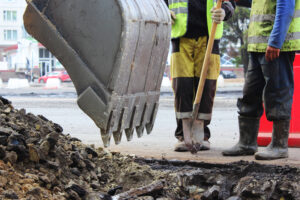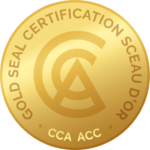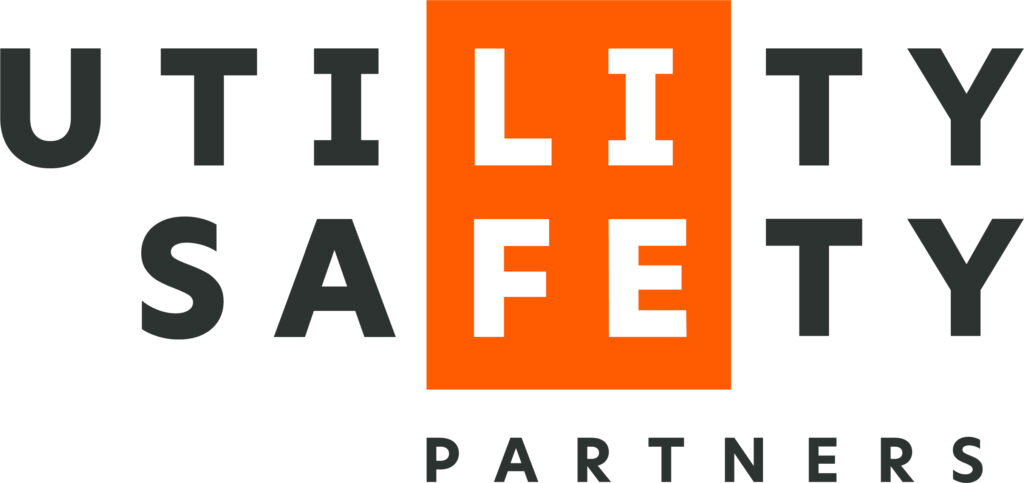Toolbox Talks
Toolbox talks are short, instructional safety sessions and are usually held daily at the start of a shift. A toolbox talk can improve safety compliance by reminding workers about compliance requirements and by helping workers recognize the importance of following compliance rules to protect their personal safety. Most talks last about 20 minutes and include the following:

- Work periods are identified and reviewed.
- Hazard and risks that potentially may be encountered that day.
- Safety reminders and quick safety lessons on topics that need to be refreshed.
- Changes to work procedures or job scope are communicated and
- New crew members or anyone that was not at the initial pre-job general safety meeting can be brought up to speed.
A good toolbox talk gets employees thinking and talking about safety.
When employees are engaged in safety, they exhibit positive safety behaviours, such as wearing personal protective equipment without being asked and that can be of great benefit to an organization safety culture.
Safety culture embodies the value placed on safety and the extent to which people take personal responsibility for safety within an organization. Safety culture is often described as the personality of an organization, as it is a shared value of safety.

Safety leadership must be demonstrated and is often argued to be the single most influential factor of safety culture. A toolbox talk can deliver experienced based safety tips which enhances understanding and better prepares workers to deal with safety challenges while performing their job tasks. Toolbox talks can strengthen work relationships that last well into the future.
It can be a challenge to write toolbox talks and that is why more and more OHS Registry members are turning to the OHS Registry for quality toolbox talks.
We have FREE toolbox talks that you can download right into your computer.
A new toolbox talk will be published on this site each month. Each topic selected is generic enough to be applied to many different work environments. While the information contained in each toolbox talk is thought to be accurate, these toolbox talks are not intended to take the place of formal OHS Registry training. They all come with a sign-in sheet you can use to document the toolbox talk and keep on file to demonstrate your on-going commitment to workplace safety.
Recent Toolbox Talks
02-19 - Ground Disturbance Safety

The digging community includes anyone who engages in, or who is responsible for any activity that results in a disturbance of the earth
regardless of depth including land clearing, earth moving, grading, excavating, trenching, digging, boring, drilling, or blasting.
Employers and employees share many of the same goals. Both want a working environment that is safe. Employee training supports a safer
and more productive workplace, the kind of environment in which people want to work. Maintaining the highest level of safety benefits both employers and employees.
Ongoing regulatory efforts provide a framework to ensure ground disturbance activities near buried utilities are conducted safely. A buried utility may include telephone, cable TV, electric, water supply and natural gas pipelines. Preventing damage to a buried utility is a shared responsibility of everyone in the digging community. Damage prevention includes elements such as planning, the effective use of one-call centres, accurate and timely identification, locating and marking of buried facilities, adherence to safe and best ground disturbance practices, proper installation of buried facilities, consequences for non-compliance, public awareness and occupational safety training programs.
BC One Call or Click Before You Dig
Knowing what underground facilities are buried in, or near your dig jobsite is essential if dangerous, or destructive accidents are to be avoided. BC One Call is a central
agency where you can call to find out what is buried on your site and where not to dig.
The BC One Call centre is accessible as a toll free number at 1-800-474-6886. BC One Call receives by phone and processes locate requests Monday through Friday, except holidays. After hours and on holidays, only emergency locate requests are processed. Locate requests may also be submitted through the BC One Call’s Click Before You Dig
01-19 - Hazardous Occurrences

What may appear to be bad luck can, on analysis, be recognized as a chain of failures and errors that lead almost inevitably to the hazardous occurrence event. These causes can be classified as: immediate causes – the agent of injury or ill health
(the blade, the substance, the dust etc.); underlying causes – unsafe acts and unsafe conditions (the guard removed etc.); root causes – the failure from which all other failings grow, often remote in time and space from the adverse event (failure to identify training needs and assess competence, low priority given to risk assessment etc.).
To prevent adverse events, you need to provide effective risk control measures which address the immediate, underlying and root causes.
- There are hazards in all workplaces; risk control measures are put in place to reduce the risks to an acceptable level to prevent accidents and cases of ill health. The fact that an adverse event has occurred suggests that the existing risk control measures were inadequate. Learning lessons from near misses can prevent costly accidents.
- An investigation is the first step in preventing future hazardous occurrences. A good investigation will enable you to learn general lessons, which can be applied across your organization. The investigation should identify why the existing risk control measures failed and what additional measures are needed.
- Simply dealing with the immediate causes of an adverse event may provide a short term fix, but, in time, the underlying root causes that were not addressed will allow conditions to develop where further adverse events are likely, possibly with more serious consequences. It is essential that the immediate, underlying causes and root causes are all identified and remedied.
- Investigations that conclude worker error was the sole cause are rarely acceptable. There will be underlying causes that created the environment in which human errors were inevitable. For example, inadequate training and supervision, poor equipment design, lack of management commitment, poor attitude to health and safety.
Talk to Us!
Canada West: (778) 957-6407
Canada East: (647) 250-7646
Mail Us!
Send Postal Mail To:
OH&S Registry
825B Laval Crescent
Kamloops, BC V2C 5P2
Canada




